It’s that time of the year again- the festive cheer, lights and the joy of celebration! Every year with Deepavali comes crackers. Time and again the government and civic bodies have tried their best to curb this, nonetheless, it continues to be a menace. It not only is an environmental hazard but also causes breathing difficulties, increase in allergy related problems, skin burns and the biggest cause of concern for ophthalmologists- grievous eye injuries that can cause even permanent damage to vision.
Demography
Unfortunately, the age group most commonly affected with such injuries are children and young adults, leaving vision permanently impaired by this negligent act lasting for a few seconds. It could have a serious impact on their future- mentally, physically, financially and tend to become a liability for the family. As per various case series conducted, males tend to be more at risk than females. Education and awareness matter a lot in these aspects, hence being more common in the lower strata of society not having access to education.
Another very common problem that doctors come across is eye injuries being reported in innocent by-standers, which makes it very unfortunate and stresses on the need for taking as many precautions as possible even if one is not bursting it themselves.
Types of firecrackers
Most commonly associated with eye injuries include
- rockets,
- bombs and
- flower pots.
They contain poisonous chemicals like magnesium, sulphur dioxide, cadmium, nitrite, nitrate.
Modes of injury
- Shrapnel in bombs can get widely dispersed by impact of the bomb type of firecrackers and cause injuries in a person standing far off.
- Soot caused by incomplete burning can cause blackish deposits and singeing of eyelashes and skin around it.
- Direct impact by rocket firecrackers can cause mechanical damage.
- Fire can cause burns ranging from superficial to 3rd degree burns that affect full thickness of the skin and once healed can cause cicatricial changes in the lid leading to in-turning (entropion), outward turning (ectropion) and exposure, damage of the cornea.
- Fire can also cause direct thermal burns in the cornea.
- Deliberately keeping crackers in coconut shells, tying it to stones can cause more damage.
- Due to the various elements like magnesium hydroxide present in crackers, they cause a combination of thermal and chemical burns.
Types of eye injuries
- Eyelid burns and singeing of lashes
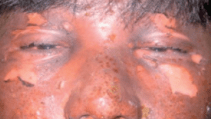
- Multiple conjunctival and corneal foreign body
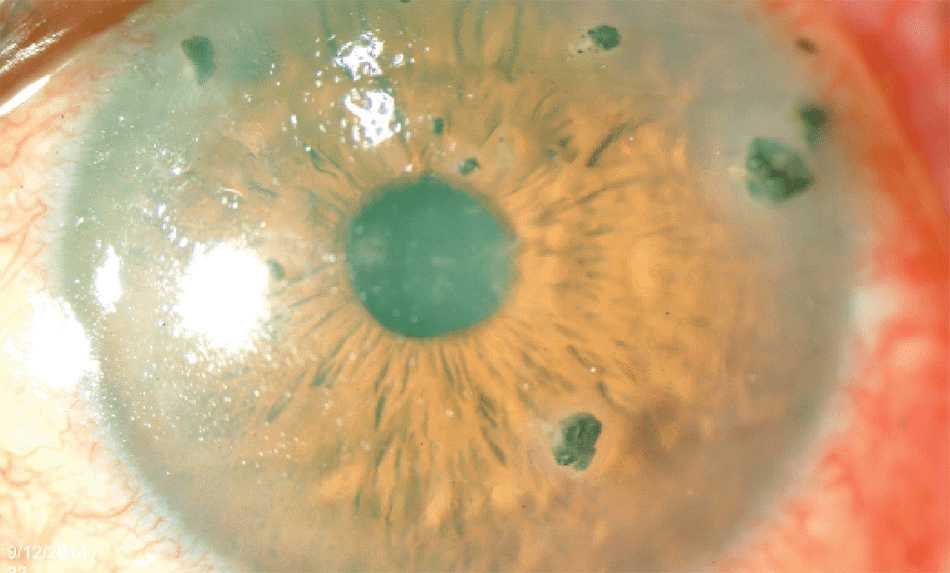
Shrapnel usually cause this kind of injury. Foreign bodies which are large in number and diffusely distributed are very difficult to remove and often leave large areas of denuded epithelium and severe inflammation, which takes very long to heal.
- Thermal corneal burn
Though it’s not as serious as chemical burns to the eye, it can still cause shrinking of the collagen tissue in the cornea, presenting as hazy/opaque area with stress lines radiating away from the site of injury and causing permanent astigmatism after healing.
- Total corneal epithelial defect with severe inflammation
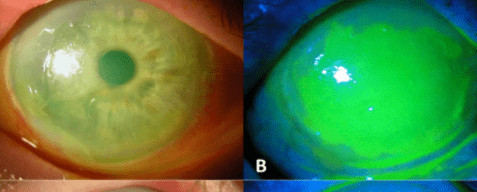
- Hyphema with iridodialysis
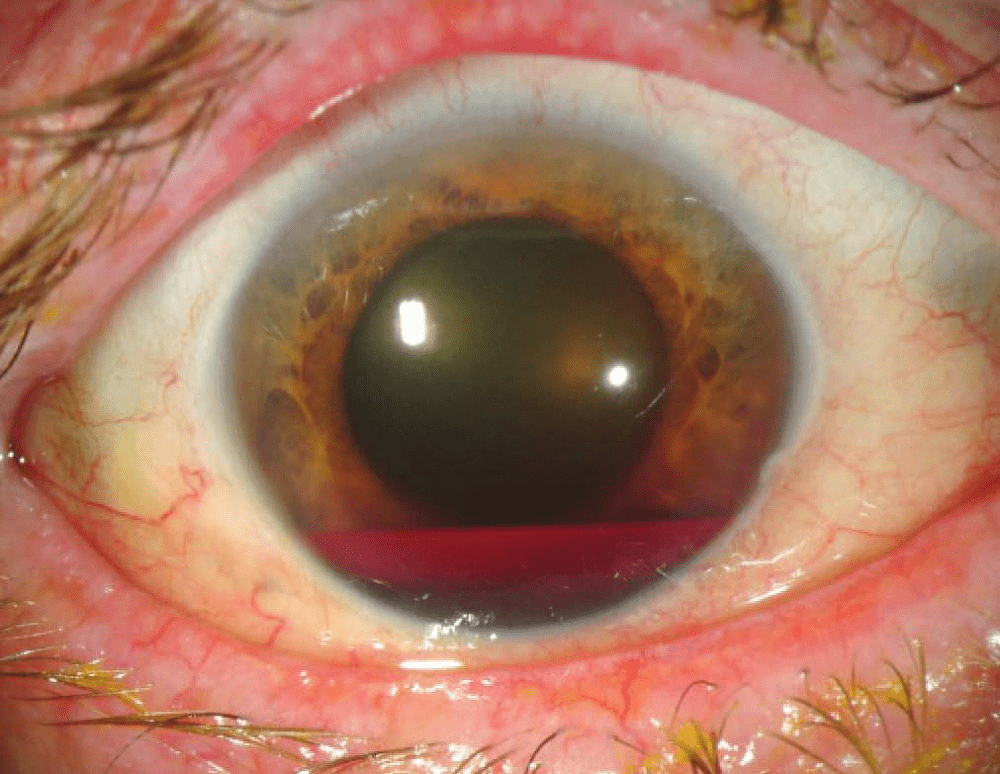
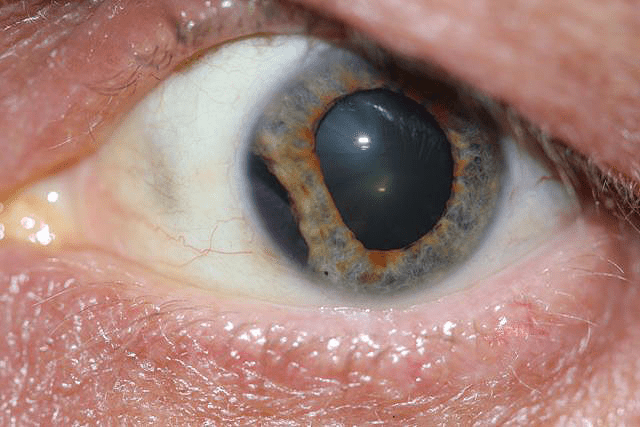
Hyphema with rebleeding occurring within 1 week of injury is associated with high chance of glaucoma which can cause permanent damage to the optic nerve if not treated early. Other mechanisms of glaucoma include trabecular meshwork injury and scarring, angle recession glaucoma.
- Rosette Cataract
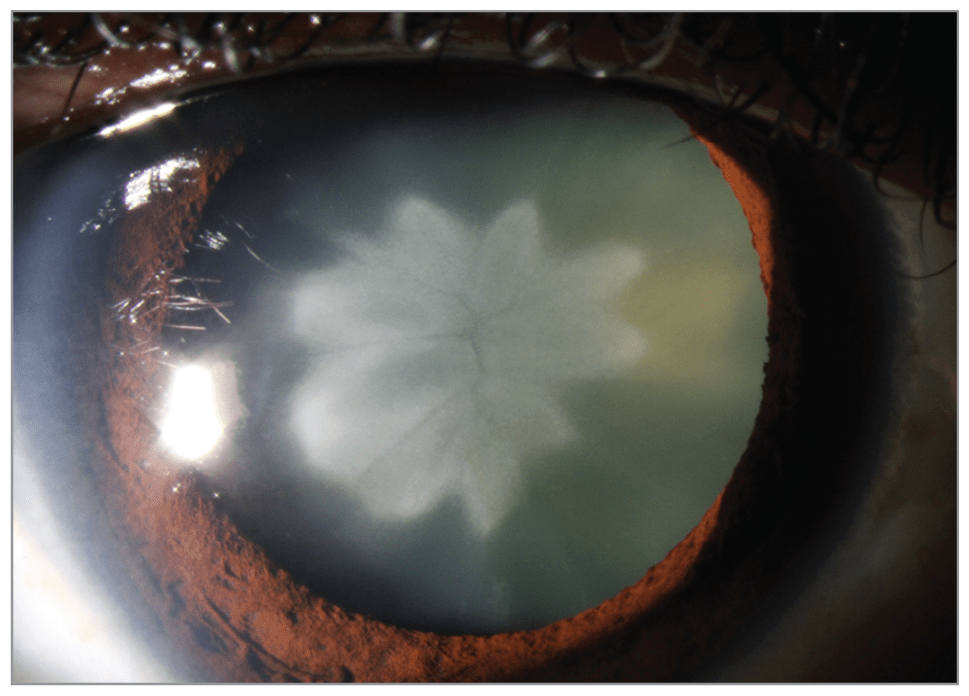
Rosette cataract is pathognomic of trauma.
Blunt trauma can also cause retinal detachment by causing retinal dialysis.
These come under the category of blunt trauma to the eye

Mechanisms of blunt trauma include
- Direct impact
- Compression wave force
- Reverse compression wave force
- Indirect compression wave force
- Penetrating and perforating injuries by sharp objects are also very common with crackers. They cause corneal/scleral tears, intra-ocular foreign body, retinal detachment, vitreous haemorrhage and subsequently are more prone to infections like endophthalmitis which is more aggressive and difficult to treat causing permanent visual loss.
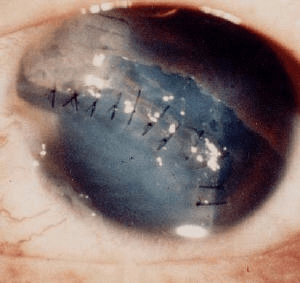
Sutured cornea-scleral tear

Traumatic retinal detachment
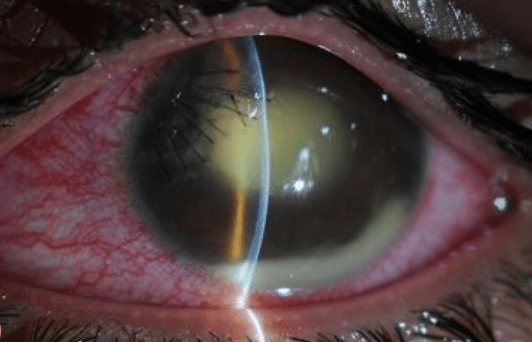
Traumatic endophthalmitis
How to prevent eye injuries
- The only absolute solution to this problem is to stop bursting crackers entirely. Stricter laws should be made and implemented on that sale of them.
- Prevention is any day better than cure. So, if someone is bursting crackers, they as well as all the bystanders watching it nearby should wear protective eyewear like polycarbonate glasses which could go a long way in preventing grievous injuries.
- It is also not advisable for children to burst any kind of crackers and if they do so it should be done with all safety precautions and under adult supervision.
- One should also not go to re-light an unlit cracker.
- It should not be kept inside any kind of coconut shell, pipe, glass bottles, tied to a stone.
- It should not be lit while still being held by the hand.
- If at any point soot particles enter the eye, it should be washed off with clean running water.
- It is always advisable to visit your nearby hospital and take immediate first aid and get a thorough eye examination to rule out serious injuries.






